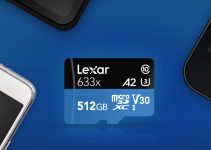In the realm of computer storage technologies, NVMe SSDs have quickly grown in popularity among consumers and professionals alike. The small, yet speedy components offer incredible read and write speeds to those who are prepared to pay the ludicrous price tag, which could top out at around a thousand bucks for large capacity drives.
While everyone is aware that NVMe storage technology is blazing fast, it’s reasonable to ask just how much better is it compared to HDDs and conventional SSDs? More importantly, do the faster speeds actually make a difference in video editing?
Filmmaker Dave Dugdale recently explored the topic in a video that compares an HDD, SSD, and NVMe SSD to figure out the advantages/disadvantages of using either storage solution, and how it affects timeline/playback performance and rendering speeds.
Starting off with the good old hard disk drive, its performance was quite unextraordinary. Sure, using the HDD was adequate for playing back a single stream of footage (even Raw footage).
Playing back multiple streams of XAVC/raw footage, on the other hand, showed that the hard disk drive was acting as a bottleneck for the playback as its speed maxed out at around 95 MB/s, resulting in dropped frames and creating an unworkable editing environment. When it came time to render the timeline, however, the HDD performed adequately with the export taking just under two minutes to complete.
Meanwhile, the Samsung 850 Pro SSD performed as expected. Of course, scrubbing the timeline was much improved than the HDD although when it came to previewing the multiple layers of Raw footage, Dugdale noticed an interesting pattern.
There were dropped frames occurring during playback, but not because of the SSD, but instead of the CPU which was maxed out before the SSD even had a chance to use its full transfer speed.
So, how about the NVMe? It turns out that the Samsung 960 Pro NVMe SSD performed similarly to the 850 Pro sibling. The timeline playback was comparable to the regular SSD. As for playing back the multiple streams of Raw footage, the NVMe drive performed slightly better than the traditional SSD. Nevertheless, the difference was negligible.
In terms of rendering performance, both the SSD and NVMe SSD managed to export a video with their rendering times falling under a minute and a half. Based on the rendering results, it’s safe to say that your choice of the storage drive, whether it be hard-disk or flash based, will have a marginal effect on the time it takes to render your project.
Taking a step back and analyzing the results, it’s clear that SSDs are far superior to their older HDD counterparts mainly due to to the SSD’s faster read/write speeds, resulting in less dropped frames during playback. While timeline performance drastically improved with the solid-state drives, don’t assume the same when it comes to exporting, where the tests revealed that whether you utilize an SSD or HDD, the rendering time will be pretty much the same.
Lastly, the use of an SSD in this particular case showed that the CPU would bottleneck the timeline performance before an SSD ever could, which means that using an NVMe SSD isn’t exactly necessary, especially since it’s on the market for such a high price as of now.
[source: Dave Dugdale]
Disclaimer: As an Amazon Associate partner and participant in B&H and Adorama Affiliate programmes, we earn a small comission from each purchase made through the affiliate links listed above at no additional cost to you.
Claim your copy of DAVINCI RESOLVE - SIMPLIFIED COURSE with 50% off! Get Instant Access!




